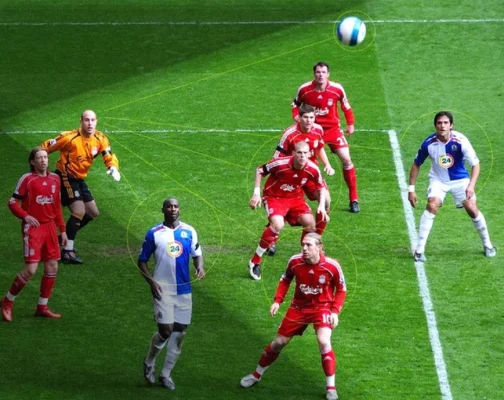Peripheral Vision: Why It Is Crucial to Train in Professional Football
Peripheral vision plays a vital role in professional football, influencing a player’s awareness, reaction time, and overall performance. The ability to perceive movements, teammates, and opponents outside the direct line of sight can significantly enhance decision-making and spatial awareness on the field. Despite its importance, peripheral vision training is often overlooked in traditional football drills. In this article, we will explore why peripheral vision is essential, how it impacts different aspects of the game, and the best ways to improve it for optimal performance.
The Role of Peripheral Vision in Football
Enhancing Awareness and Decision-Making
Football is a dynamic sport that requires players to process multiple pieces of information simultaneously. A player with strong peripheral vision can keep track of opponents’ movements, anticipate passes, and make better split-second decisions. This ability is particularly crucial for midfielders, who must constantly assess their surroundings and distribute the ball efficiently.
Improving Reaction Time
Quick reactions are essential in football, especially in high-pressure situations where every second counts. Peripheral vision allows players to detect changes in their environment without turning their heads, enabling faster responses to opponents’ actions. Whether it’s intercepting a pass, adjusting positioning, or reacting to a sudden play shift, improved peripheral vision provides a competitive edge.
Aiding in Spatial Awareness and Positioning
Players must be aware of their positioning relative to their teammates, opponents, and the ball at all times. Those with well-developed peripheral vision can maintain better spatial awareness, reducing the chances of defensive errors or misjudged passes. Defenders, in particular, benefit from this skill, as they need to track multiple attacking threats while staying focused on the ball.
Methods to Train Peripheral Vision
Specific Drills for Peripheral Awareness
Training peripheral vision requires dedicated exercises that challenge the brain’s ability to process visual information quickly. Some effective drills include:
- Multi-Object Tracking: Players are exposed to multiple moving targets simultaneously, improving their ability to monitor various elements within their visual field.
- Reaction Light Training: Using tools like reaction lights or flashing cues helps develop quicker responses to unexpected stimuli.
- Peripheral Passing Drills: Practicing no-look passes and scanning exercises encourages players to rely on their peripheral vision rather than direct sight.
Cognitive and Neurological Training
Peripheral vision is not solely about eyesight—it is also connected to cognitive function. Players can enhance their peripheral perception through:
- Eye movement coordination drills that train the brain to efficiently process and respond to visual stimuli.
- Virtual reality simulations, where athletes experience high-intensity match scenarios requiring quick decision-making based on peripheral cues.
- Hand-eye coordination exercises, which improve reaction speed and focus under pressure.
The Impact of Peripheral Vision on Different Football Positions
| Position | Benefits of Strong Peripheral Vision |
|---|---|
| Midfielders | Better awareness of passing options and space management. |
| Defenders | Improved tracking of opponents while maintaining defensive shape. |
| Strikers | Ability to detect off-the-ball movements and react quickly. |
| Goalkeepers | Enhanced ability to anticipate shots and manage defensive lines. |
Common Mistakes in Peripheral Vision Training
Despite its importance, many players neglect proper peripheral vision training. Some of the common mistakes include:
- Relying only on central vision: Players often develop habits that limit their field of view, reducing their effectiveness on the pitch.
- Lack of consistency in training: Peripheral vision needs regular exercises to stay sharp.
- Ignoring cognitive exercises: Focusing only on physical drills without integrating mental training reduces the overall effectiveness of vision training.
Conclusion
In modern football, peripheral vision is a game-changing ability that can set players apart from their competition. From improving awareness and decision-making to aiding in positioning and reaction time, it plays a crucial role in match performance. By incorporating specific vision-training drills and cognitive exercises, footballers can maximize their potential and make quicker, smarter decisions on the field.

